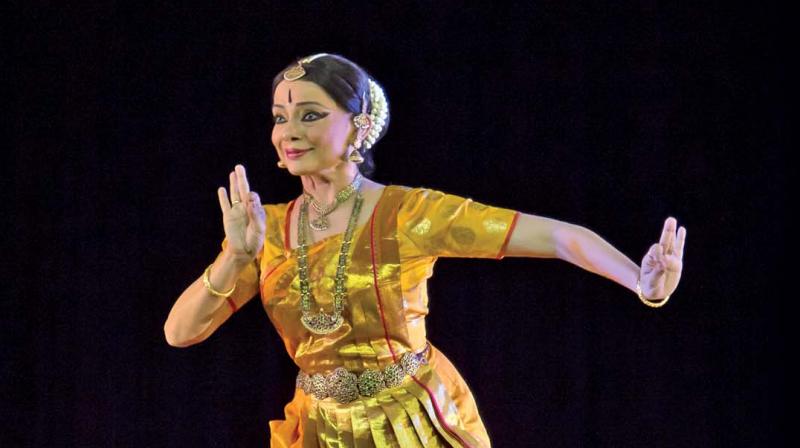Celebrating DakshinaChitra with art

Over the past 20 years, DakshinaChitra has become one of the major hubs for art in Chennai. This cross-cultural living museum of art, architecture, lifestyles and performing arts of South India, is a significant platform for artisans and folk artistes.
As the centre celebrates its two decades in the city, it is organising a fundraising programme, Thari — The Loom, with prominent dancer Malavika Sarukkai.
On this occasion, the museum’s founder Deborah Thiagarajan and Malavika talk about the dance programme and the reason for organising this event.
For Deborah Thiagarajan, it is hard to believe that it has been two decades since DakshinaChitra opened to the public. “We welcomed 2,20,000 visitors last year and so many of them told us how much they enjoyed the place. We want to continue to give our visitors experiences that they can enjoy and learn from — which they cannot get anywhere else, unless they travel to the many villages of the South,” she says.
DakshinaChitra’s two temporary galleries are programmed throughout the year and are open to senior and upcoming young contemporary artistes. They also offer a variety of workshops in the arts for adults and children.
“The graduates from our arts management internships have gone on to contribute to the management of art institutions in India. That program is particularly important as India’s growing arts and museum scene needs many more trained personnel than what is presently available,” she adds.
DakshinaChitra has grown to become a major museum with all the demands that a museum has — collections management, conservation, archiving, a library on arts, etc. The team is planning to upgrade their current exhibitions and bring in more interactive exhibitions, research, seminars, publications and special programs for visitors. “In order to do this, we need funds and our fundraising programme with Malavika Sarukkai for DakshinaChitra will help us to improve our infrastructure, as well as upgrade our exhibitions. They will also experience a beautifully choreographed dance evening on the theme of our endangered handloom textiles for which India is known for,” promises Deborah.
Malavika Sarukkai, the lady behind the inventive dance concept, is excited about the production. “I have performed solos in Chennai, but when Deborah mentioned about their 20th anniversary, I thought it would be a wonderful occasion to present my group production for the first time in the city,” she says.
The 75-minute programme explores the design and play of thread in the Bharatanatyam language of dance.
“The production celebrates the immense creative possibilities within tradition whilst making a contemporary statement. It makes us aware that in the ordinary there could be hidden extraordinary — giving us another dimension to life. Moreover, it explores the artistic relationship between the dancer and the weaver. It is a confluence of traditional practice informed by contemporary sensibilities which extends the language of classical dance from India,” reveals Malavika.
We ask Malavika the reason behind such a beautiful concept. “A couple of years back I read an article on the Korvai sarees made by the weavers of Kanchipuram. Korvai sarees are traditionally woven silk sarees where each border is in a different colour. While reading the article, I could feel the profound meaningful concept hidden in the saree and decided to present it as a dance performance,” beams the classical dancer.
Basically, the dance production explores the fundamental concepts that are shared between the two seemingly different but essentially connected disciplines — dance and weaving. “We are exploring the idea of space, structure, proportion, relationship, alignment, opposition, conjunction, symmetry and motif. Interestingly, both dance and weaving work through coordination, rhythm, measurement and design.”
Malavika has done extensive research for this dance choreography and has visited many weaving villages in Kanchipuram. “While speaking to the master weavers from Kanchipuram, I realised their commitment and passion towards weaving. More than just a livelihood, weaving is a way of life for them. Their sense of design and artistry are remarkable. It was so inspiring,” she shares.
Out of the three choreographies in Thari — The Loom, the first choreography has an actual sound of a silk and cotton loom in Kanchipuram. “Our sound engineer has recorded it from one of the weaver’s loom and it has come out extremely well. We have also used a lot of percussion instruments,” she smiles.
Sumantra Ghosal is the creative collaborator of the show. The dancers in the production are Jyotsna Jagannathan, Shruthipriya Ravi, Aditya PV, Shreema Upadhyaya and Nidhaga Karunad BM. Gyandev Singh, one of India’s premier light designers has created the unique light design. Music production and sound design are by highly acclaimed musician and sound engineer Sai Shravanam and the costumes are by Sandhya Raman.
(The event will be held on November 3 at Music Academy from 7 pm onwards)

